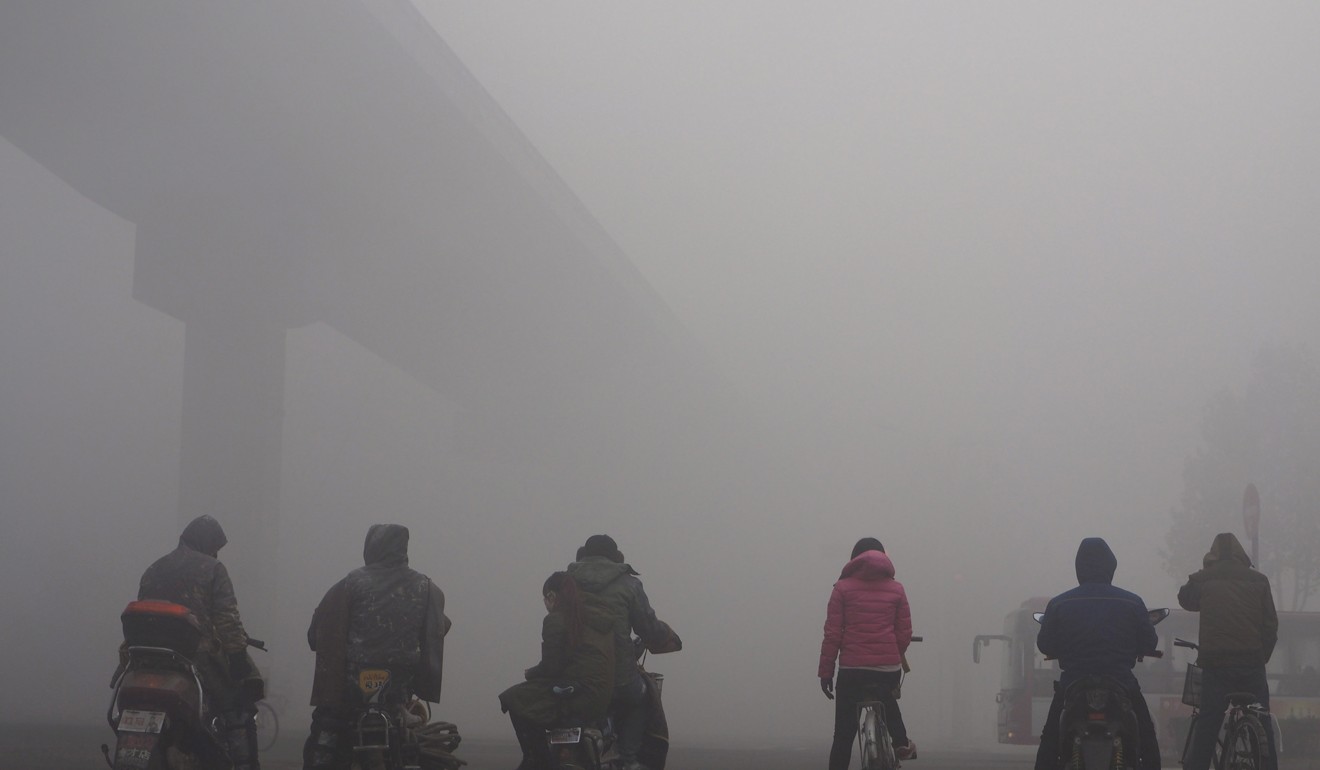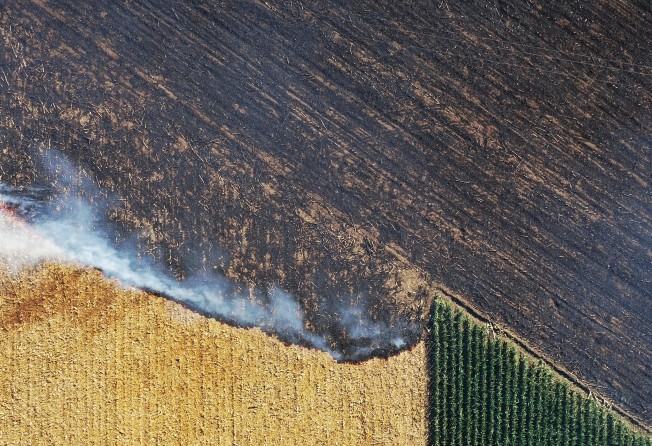
China’s surveillance network moves into the country to catch farmers illegally burning straw
Thousands of infrared cameras set up across northern province of Hebei with aim of stopping fires that can pose serious risk to the environment

As China’s harvest season looms, officials in one rural area have set up a network of surveillance cameras that will allow them to check whether villagers are illicitly burning straw.
The hi-tech system named Blue Sky, designed to monitor breaches of anti-pollution regulations, involves a network of around 4,000 high-definition infrared cameras across the northern province of Hebei.
When the system spots a suspected fire, it can immediately locate the position, shoot a video, take a snapshot and send the information to the phone of monitoring officials, according to the director of the Centre for Environmental Education and Communications in Hengshui city.
The system also generates a daily chart listing suspected fires, which can be sent to city governments, said the director, who only gave his surname Zhou.
Zhou each camera had a monitoring radius of 5km (3 miles) and can cover 78.5 sq km.
At present there are just over 3,490 cameras are in place across Hebei, and there are plans to add around a thousand more to the network.
Hengshui began installing its network of cameras in May, the first part of the province to do so.
“I’ve seen the cameras myself, they respond quickly to even a small spark of fire, they are quite sensitive and effective,” Zhou said.

Surveillance cameras are now ubiquitous in urban areas across China and have been used for everything from monitoring children in the classroom to naming and shaming jaywalkers and picking out wanted fugitives from the crowd at events such as pop concerts and beer festivals.
The expansion of this network into rural areas has been prompted by environmental concerns, officials say.
Officials have spent years trying to stop villagers burning straw and cornstalks because of pollution concerns and those caught doing so risk fines of 500 yuan (US$73) or even detention.
Ma Jun, director of the Beijing-based Institute of Public and Environmental Affairs, said this was the first time hi-tech measures had been used in this way.
“This new method should help government to find these activities effectively and in a more timely fashion,” he said.
He said the mass burning had quite notable effects on the environment and posed a risk to public health.
A 2016 report in the Beijing-based China Environment News said during heavy pollution days around harvest season, the burning contributes around 20 per cent of the smog that in the air, and sometimes reaches up to 40 or 50 per cent.
In 2016, satellite surveillance found a total of 960 incineration points across China, spanning 18 provinces and 65 cities.
The institute has developed an app called Blue Map that collects public pollution data released by government, companies and NGOs, and during harvest season, the pollution is usually heavier where farmers are burning cornstalks, and sometimes can even spread through multiple provinces, he said.